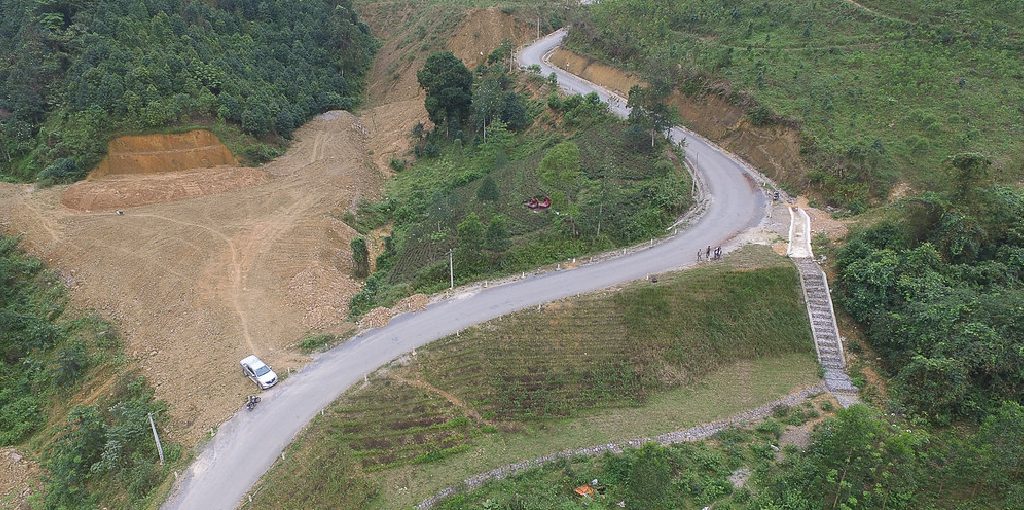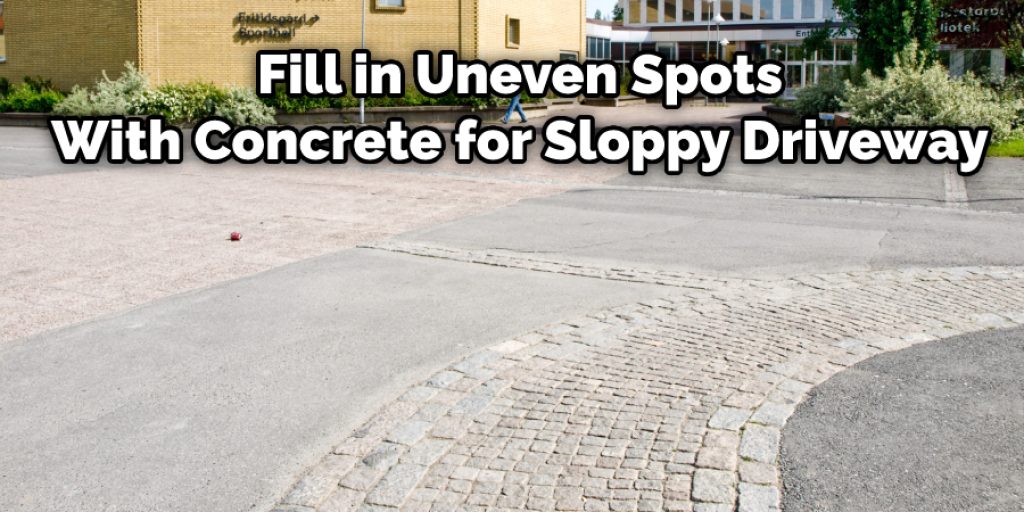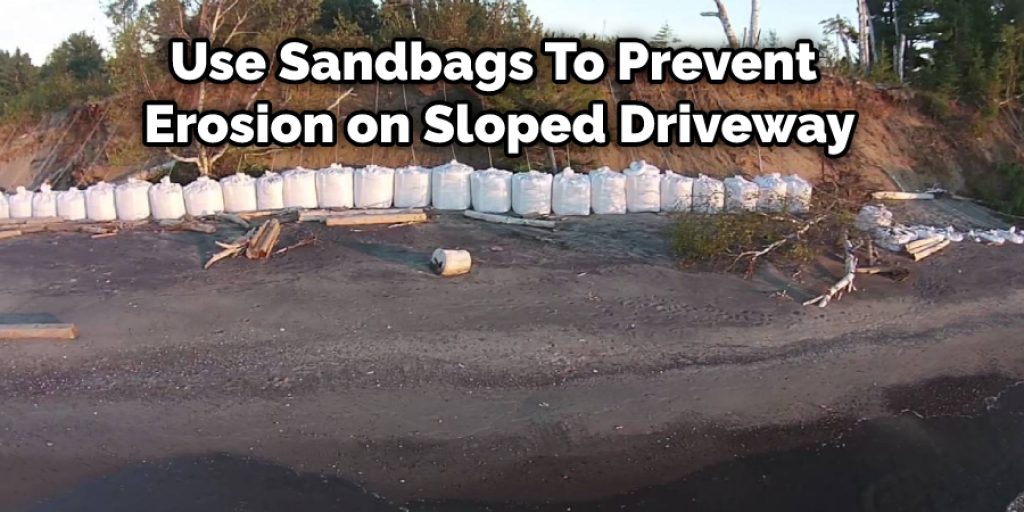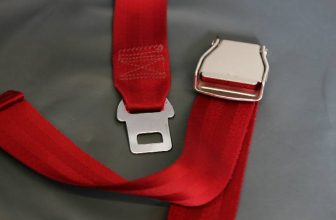How to Prevent Erosion on a Sloped Driveway
Erosion can occur on a sloped driveway when the soil is not properly maintained. To prevent erosion, homeowners should make sure to take care of their driveways by clearing out debris and weeds that may be growing in them.

They also need to keep an eye on the condition of the pavement and any loose stones that could cause potential problems for vehicles driving over them. It’s best to do this every season so there are no surprises! In this blog post, we are going to cover how to prevent erosion on a sloped driveway! So read this blog post to know more!
What is Erosion?
Erosion is the process of the topsoil being washed away by water or wind. This can be a natural occurrence, but it can also be caused by human activities like construction, deforestation, and improper landscaping practices. Erosion creates uneven surfaces and weakens the structure of driveways, making them prone to cracks, potholes, and other damage. It can also lead to water pooling and flooding in the driveway, making it dangerous for vehicles and pedestrians.
It’s essential to prevent erosion on a sloped driveway because it not only affects the aesthetic value of your property but it can also be a safety hazard. So, let’s look at some steps you can take to protect your sloped driveway from erosion.
Why is it Important to Prevent Erosion on a Sloped Driveway?
As mentioned earlier, erosion can cause damage to the structure of your driveway, making it unsafe for vehicles and pedestrians. It can also lead to costly repairs and decrease the value of your property. Additionally, erosion can cause sediment build-up in nearby water bodies, which can harm aquatic life and affect the overall ecosystem. By preventing erosion on your sloped driveway, you are not only protecting your property but also being environmentally conscious.
It’s also essential to prevent erosion on a sloped driveway because it can affect the drainage of your property. If water is not able to properly flow away from your driveway, it can lead to moisture build-up and damage to your home’s foundation. This can result in mold growth and structural issues, which can be expensive to fix.
Necessary Tools and Materials for Preventing Erosion on a Sloped Driveway
Before we dive into the steps for preventing erosion, let’s take a look at some of the tools and materials you will need:
Shovel:
This will be used to clear out debris and weeds. Make sure to get a sturdy shovel with a sharp edge for efficient removal.
Garden rake:
A garden rake is essential for leveling out the topsoil and removing any debris that may be missed by the shovel.
Mulch:
Mulch helps to retain moisture in the soil, preventing it from being washed away by water or wind. It also provides additional nutrients to the soil.
Erosion control matting:
This is a heavy-duty fabric that helps to stabilize the soil and prevent erosion. It’s especially useful for sloped driveways.
Gravel or stones:
These can be used as an alternative to mulch, providing additional stability and drainage for your driveway. Make sure to get gravel or stones that are large enough to stay in place and not wash away easily.
10 Ways How to Prevent erosion on a Sloped Driveway:
No matter what climate you live in, if you have a sloped driveway, then there is a good chance that your driveway will erode over time. If you want to slow down the process and prevent erosion on your sloped driveway, it’s essential to take the proper precautions and maintenance. This guide will show ten different ways that can help you to prevent erosion on a sloped driveway.
1. Remove any Large Debris and Fill in any Ruts:
If you have rocks, sticks, and other large debris in your driveway, then it’s essential to remove them. The debris can cause uneven surfaces that will encourage ruts in the future. Furthermore, holes left by large debris can allow water to seep under the driveway. When this happens, you risk your driveway becoming damaged or even completely washed away by rainwater.
You can use a shovel or garden rake to clear out any debris and fill in any ruts with topsoil. Make sure to compact the soil down with your feet or a tamper. The goal is to create a smooth, even surface that will be resistant to erosion.
2. Add gravel:
Adding gravel is a quick and affordable fix for preventing erosion on a sloped driveway. While you can purchase ready-to-use gravel packages, it’s much cheaper to buy a bulk amount of gravel from a construction or landscaping site. The gravel will fill in the area between where your driveway meets the ground and help to prevent water from seeping under the drive.
You can use a shovel and rake to spread the gravel evenly over the surface of the driveway. Make sure to choose gravel that is large enough to stay in place on a sloped surface. Otherwise, it may wash away with rainwater.
3. Fill in Uneven Spots with Concrete:
If there are any uneven spots in your sloped driveway, the best way to deal with them is to use concrete. Filling in these cracks helps smooth out your driveway and prevents water from seeping under the drive.

For large cracks, you must use premixed concrete instead of trying to mix it on-site. Premixed concrete is already integrated with gravel, sand, and other ingredients to ensure the right consistency. After pouring the concrete, you can use a trowel to smooth it out and create a flat surface.
4. Install a Drainage System:
Drainage systems are designed to direct water away from your home. For example, if you install a drainage system on your sloped driveway, water will flow between the ground and your drive instead of seeping into or beneath your driveway. This type of system can be expensive, but it may be necessary for homes in areas that receive a high volume of rain or snowfall.
You can install a simple drainage system yourself by digging a trench along your driveway and filling it with gravel. This allows water to flow away from your driveway and prevent erosion. The trench should be angled away from your home and towards a designated drainage area.
5. Use Sand to Fill Small Cracks:
If you only see small cracks on your driveway, you should use sand instead of concrete to fill them in. While this won’t stop water from seeping under your sloped driveway, it will help to prevent water from pooling on top of your driveway. The sand will also stop larger rocks from getting stuck in the cracks. To fill in the cracks, use a broom to push the sand into them and then sweep off any excess.
It’s essential to regularly check and fill in any new cracks that may appear on your driveway, as they can quickly expand and cause more significant issues. The key is to catch them early on and take caution.
6. Keep Your Driveway Clean:
If you want to prevent erosion on a sloped driveway, you must regularly clean it. You can start this process by removing any leaves, twigs, and other debris immediately after it falls. If you can’t remove the debris by hand, you should use a leaf blower to clear the area. Keeping your driveway clean also means keeping it free of ice in cold climates.
It’s also essential to regularly inspect your driveway for any signs of erosion or damage. Catching these issues early on can prevent more significant problems in the future. You should also fill in any small cracks with sand or large cracks with concrete as soon as possible.
7. Apply Sealant:
If you want to make sure that your sloped driveway stays clean and protected from the elements, then it’s a good idea to seal it with a commercial-grade sealant. This type of Sealant will not only protect your drive against water damage, but it’ll also prevent other debris from sticking to your driveway. It’s also essential that you apply a new coat of Sealant every 1-2 years.
You can apply the sealant with a roller or sprayer. Make sure to carefully follow the instructions on the product’s packaging. The sealant may take several hours to dry completely, so plan accordingly.
8. Cover Your Driveway:
If you’re looking for a quick way to prevent erosion on your sloped driveway, then it’s good to cover it up with heavy plastic or tarp during the winter months. This method will protect your driveway from snowfall and ice, which are two leading causes of erosion. However, if you use this method, make sure to remove the covering before warmer weather arrives in springtime. Otherwise, moisture can get trapped under the covering and cause even more damage.
You can use heavy plastic or a tarp to cover your driveway, but make sure to secure it tightly with rocks or bricks. You should also avoid using tarps with grommets, as they tend to collect water and cause more damage.
9. Use Sandbags:
Sandbags are an affordable way to prevent erosion on your sloped driveway or other areas around your home. Fill the bags with three parts gravel and one part cement for a durable mixture that will hold up against rain and snowfall. Alternatively, you can fill the bags with dirt or even rocks to help protect your home from flooding.
It’s essential to place the sandbags strategically around your driveway, so they redirect water away from your home. You should also replace them every year or whenever you see signs of wear and tear. Sandbags can also be used in combination with other methods, such as installing a drainage system or covering your driveway.
10. Plant Grass:
While these solutions are meant to prevent erosion on a sloped driveway, planting grass is a maintenance-free solution for homeowners who want a greener driveway. The grass is porous, which means it will soak up rain and snowfall instead of allowing water to seep under your drive. It also stops larger rocks from getting stuck in the exposed dirt on your sloped driveway.
It’s essential to choose the right type of grass for your climate and soil conditions. Some types of grass, such as Bermuda grass, are more suitable for sloped driveway erosion control because they have deep roots that can hold the soil in place.
Following these tips and regularly maintaining your sloped driveway can help prevent erosion and prolong its lifespan. Remember to check for cracks, clean regularly, and consider investing in a drainage system or applying sealant for added protection. By taking these precautions, you can ensure that your driveway remains in good condition for years to come. Happy paving!
Some Tips and Advice:
1. If your driveway is sloping towards a sidewalk or exterior of a building, it may be best to build up the soil with additional layers of rocks. This will prevent water from flowing over the top and straight down the surface of the driveway.
2. In climates with heavy rainfalls, adding a porous drainage system will help prevent erosion.
3. If your driveway is sloping towards a lawn, it may be best to dig a trench and surround the edges with gravel so that water has no place to go but down into the grass. This will avoid erosion of the soil under your driveway.
4. If you plan on doing any heavy construction such as digging or building, it may be best to call a gravel supply company and order crushed rock. This will prevent any movement of the earth as you work on your driveway.
5. If large amounts of water are flowing down your driveway, causing puddles to form around all sides, you may want to re-evaluate the direction of the slope.
Frequently Asked Questions:
Q: How Often Should I Inspect My Sloped Driveway for Erosion?
A: It’s recommended to inspect your driveway at least once a year or after significant weather events, such as heavy rainfalls or snowstorms. You should also regularly check for any signs of wear and tear, such as cracks or exposed soil. The earlier you catch these issues, the easier they will be to fix.
Q: Are There Any Eco-friendly Options for Preventing Erosion on a Sloped Driveway?
A: Yes, planting grass or other ground cover is an eco-friendly option for preventing erosion on a sloped driveway. You can also use sandbags filled with natural materials, such as dirt or rocks. These methods will not harm the environment and provide added benefits, such as improving air quality and reducing stormwater runoff.

Q: How Can I Tell If My Sloped Driveway Needs to be Repaved?
A: Signs that your sloped driveway needs to be repaved may include cracks larger than 1/4 inch, a rough and uneven surface, or potholes. You should also consider repaving if your driveway is over 20 years old or has significant damage from erosion. Consult with a professional paving contractor for an assessment and recommendation.
Q: Can I Use Sand Instead of Gravel to Fill My Sandbags?
A: Yes, you can use sand instead of gravel to fill your sandbags. However, keep in mind that sandbags filled with sand may not be as sturdy and durable against heavy rainfalls and snowmelt compared to those filled with gravel. If you live in an area prone to severe weather, it may be better to use a mixture of gravel and cement for added strength.
Q: Is it Necessary to Hire a Professional for Erosion Control on My Sloped Driveway?
A: It is not always necessary to hire a professional for erosion control on your sloped driveway. Some simple methods, such as using sandbags or planting grass, can be done by homeowners themselves. However, for more extensive issues and solutions, it may be best to consult with a professional paving contractor who has experience with sloped driveways and erosion control. Always keep safety in mind and consult with a professional if you are unsure about how to handle the issue.
Final Words:
It’s essential to take the time to maintain your sloped driveway properly. If you don’t, it can lead to severe damage and costly repairs. The best way of preventing erosion is by installing a retaining wall or slope guard system near the top of the hillside, which will divert water away from its path down towards an outlet at ground level.
We hope this article on how to prevent erosion on a sloped driveway has been helpful to guide you to learn all you need to know about maintaining a sloped driveway. It’s also important to consider the amount of traffic that may be put on your driveway as well as its slope. Before making any type of repairs, weigh your options and consult a professional if necessary.




